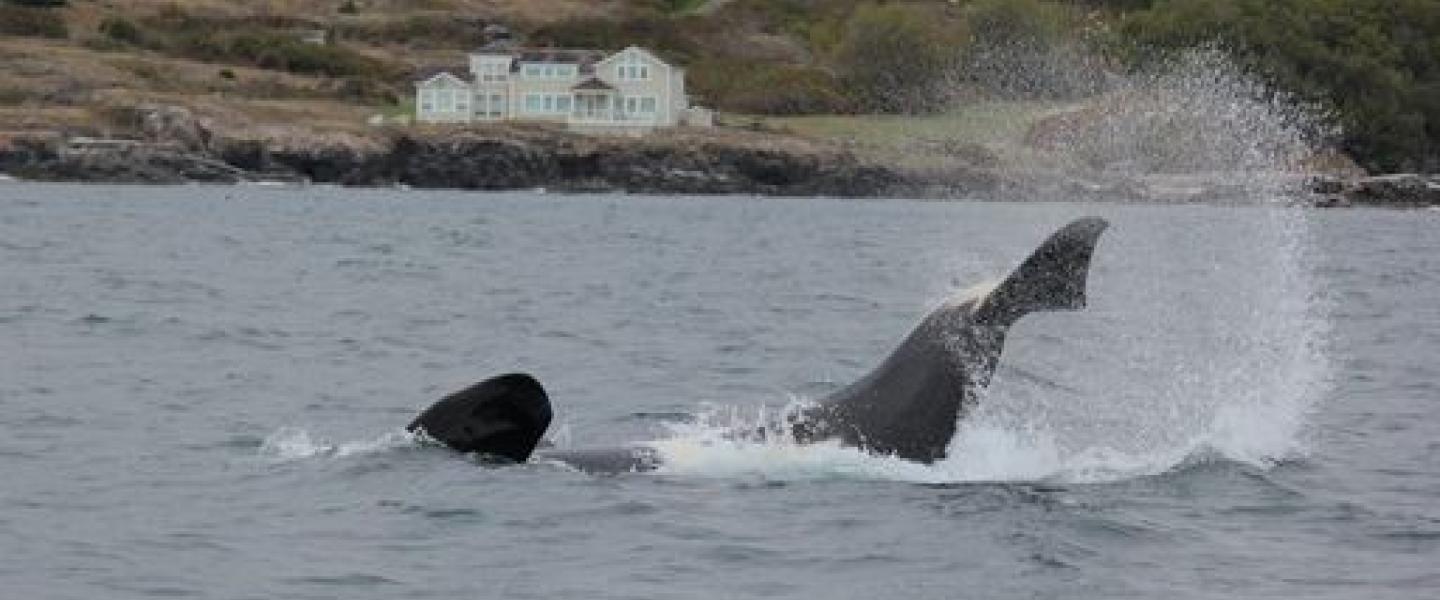
Olivia | M/V Osprey | June 5th, 2021 | 12:30pm
Leaving the dock today, our Captain decided to push north towards some whale rumors creeping in from Speiden Channel. This made the easy decision to move north through San Juan Channel in hopes of seeing some large, black and white dolphins before they swam into Canada. With Covid-19 border restrictions still in effect, we are unable to view any whales in Canada as of right now, meaning we work as hard as possible to navigate around these restrictions and give our passengers as great of views as possible.
Coming on scene just west of Henry Island, still in United States waters, we began spotting the black dorsal fins of the T046B’s. This comprised of five whales, with a matriarch “Raksha” who was born in 1988. The mother of T046B, T046 was previously held in captivity and now has one of the highest volumes of descendants. T046B1 [T046B’s first child] made T046 a great grandma with the very famous whale with leucism, Tl’uk. Since it is common in this ecotype for females to have a few calves of their own and split off to form their own matriline, that means T046B1, and her two calves were not present.
We were able to watch this family roll around with one another, favoring close touch, when suddenly, they decided to eat lunch! It appeared there was Harbor Porpoise on the menu today! It was easy to see what they were feasting on since it is common behavior for Bigg’s Killer Whales to toss around and play with their prey. Meaning, we saw little Harbor Porpoise tail flukes in the chaos.
It is always extra exciting to see these orcas eat, reminding us of what a healthy population of Killer Whales look like as they continue to grow in population exponentially each year. This led to an open discussion on how the impacts we make on food sources [salmon] can positively or negatively impact their predator (Southern Resident Killer Whales] and what this ultimately leads to in an ecosystem. Aside from open doors to a large conservation issue continually affecting the Pacific Northwest, feeding behaviors also tend to provide great visuals of Killer Whale behaviors such as chin slapping, lobtailing, cartwheels, lunges, and breaches.